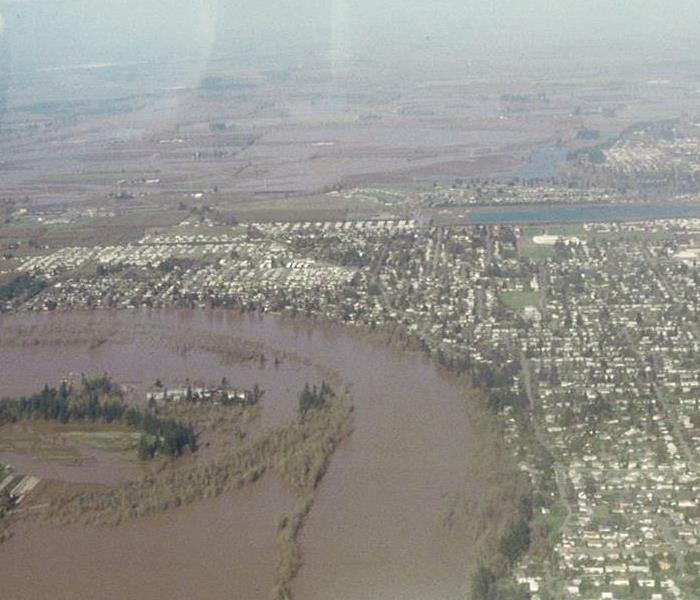Marion County Emergency Management - Floods
12/8/2016 (Permalink)
Floods
Before a Flood
Install check valves in sewer traps to prevent floodwaters from backing up in sewer drains, or buy large stoppers to plug sinks, showers, tubs.
Obtain sandbags, plastic sheeting, lumber and towels.
Fuel vehicles in case evacuation becomes necessary.
Monitor rapidly changing weather conditions.
During a Flood
- If there is time:
Disconnect all electrical and gas appliances. Shut off the water main to keep contaminated water from the water heater (a source of emergency drinking water).
Bring outdoor possessions inside.
Move valuables and essential items to upper floors.
Sandbags should be stacked well away from the building to avoid damaging walls. If major flooding is expected, flood the basement with clean water to equalize the water pressure on the outside of basement walls and floors.
Round up pets.
- Evacuation
Use travel routes recommended by local authorities.
Keep a radio on for news and updates.
Watch for flooding at bridges, viaducts, and low areas.
Be alert for thunder and lightning that may signify rain and more flooding ahead.
Don't drive over flooded roads. It's impossible to tell how deep the water is, or if portions of the roadway have been washed out. Vehicles may be swept away.
Never try to cross flowing water above your knees.
All passengers should abandon a stalled vehicle immediately and move as a group to higher ground.
After a Flood
Return home only when authorities say it is safe.
If there is major structural damage or there are utility breaks, have qualified specialists inspect your home and make repairs before you reenter.
When inspecting your home on your own for the first time, use a flashlight, not a torch or lantern. Sniff for gas leaks. Wear rubber-soled shoes and rubber gloves in case of severed electrical lines. Don't turn on electrical switches. Check electrical circuits only when electricity has been shut off.
Don't use flooded electrical appliances until they have been repaired.
Don't drink municipal water until the health department has declared it safe.
Don't rush to pump out a flooded basement. If the water is removed all at once the walls may cave in because of the sudden pressure change. Pump out about a third of the water a day.
Foods that have come into contact with flood water can be a serious health hazard. The only flood-damaged goods entirely safe for salvage are those in sealed containers.
The following foods should be discarded if they have come into contact with flood water:
Open containers and packages of food
Unopened jars with paper seals under the lid (mayonnaise, salad dressing)
Spices, seasonings, flavorings, and extracts
Food in canisters (flour, salt, sugar)
Preserves sealed with paraffin (jam, jelly)
Fresh meat, fish and poultry
Fresh fruits and vegetables
Containers with non-sealed fitted lids (cocoa, baking powder)
Food in paper, foil, cellophane, or cardboard containers (cereal, pasta, rice, cookies)
Bottled carbonated beverages with encrusted silt in the lid






 24/7 Emergency Service
24/7 Emergency Service
